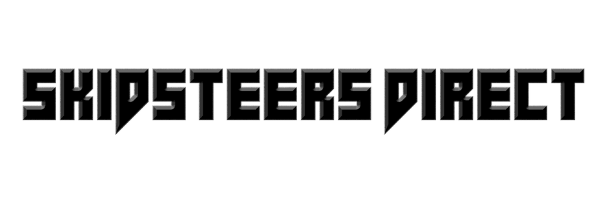
Low Flow Skid Steer Brush Cutters - Your Questions Answered [2024]
Share
Here are two of the most common questions we get asked from skid steer owners looking for their first brush cutter:
-
Do I need high-flow hydraulics on my skid steer to run a brush cutter?
The answer is no, you do not.
-
How many gallons per minute do I need to run a skid steer brush cutter?
The answer is s little as 11-12gpm may work on certain models of brush cutters.
In this article, we are going to look more in depth at low flow brush cutters and why one might be right for you!
What is the difference between high flow and low flow skid steer brush cutters?
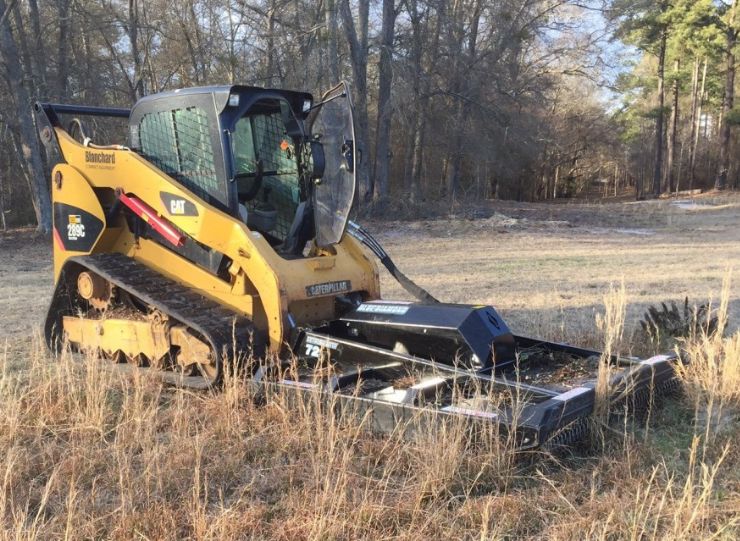
As a starting point, we know that different brands and models of skid steers will have different capabilities of auxiliary hydraulic flow. Some will have standard flow (aka low flow) hydraulics, while others will have both low flow and high flow hydraulics.
With that in mind, the hydraulic motor on a brush cutter must be sized appropriately to the skid steers hydraulic output.
Running too much or too little hydraulic flow through a brush cutters hydraulic motor risks damaging the attachment and skid steer, voids warranties and robs the brush cutter of power and efficiency.
So the main difference between a high flow and low flow brush cutter is the size of the hydraulic motor powering it.
Will a Low Flow Brush Cutter Have Any Performance Difference Over a High Flow Brush Cutter?
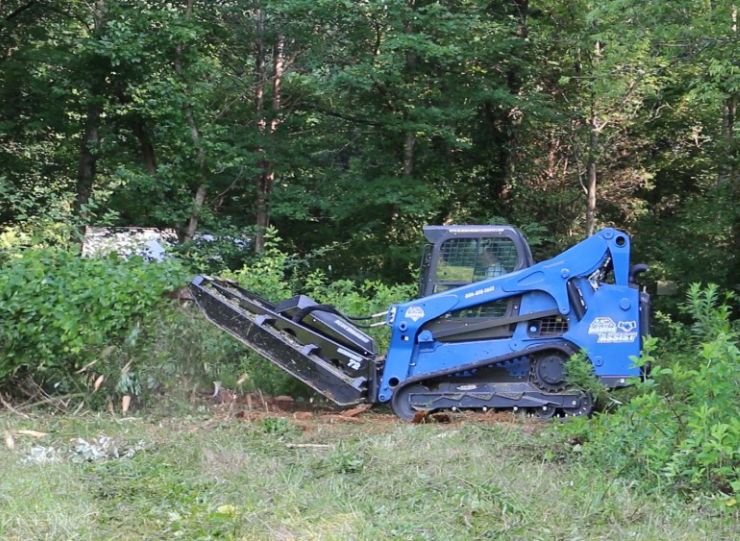
From our experience, the performance difference between high and low flow brush cutters is negligible, so long as it is used properly and with the right sized skid steer.
High Flow Advantages
A high flow brush cutter may have a 100cc larger hydraulic motor than a low flow brush cutter. The main advantages the high flow motor may have is:
-
The blade carrier may spin up to speed faster from idle.
-
The blade carrier may better resist slowing down when cutting.
Low Flow Advantages
-
Low flow brush cutters are often more economical.
-
Low flow brush cutters often perform better on steep terrain.
Overall, a low flow brush cutter when used properly will perform 90% as well as its high flow counterpart, when paired with the correct skid steer.
Are There Any Other Design Differences Between High and Low Flow Brush Cutters?
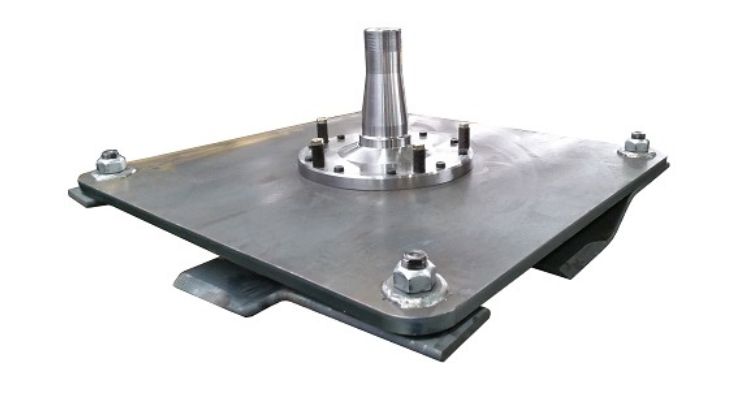
Manufacturers may design some low flow brush cutters to have lighter disc carriers and only carry three blades in order to keep the cutters as efficient as possible. However, this isn't always the case.
Some models of skid steer brush cutters will have the same design among all hydraulic flow ranges, and just change the size of the hydraulic motor to make it a high or low flow brush cutter.
An example of a dedicated low flow skid steer brush cutter would be the Blue Diamond 60" Heavy Duty Brush Cutter 11 - 16 GPM. This model supports three blades and its components are designed for maximum efficiency with low flow (standard flow) skid steers.
An example of a brush cutter that uses the same design among high and low flow rates is the Blue Diamond 72" Severe Duty Brush Cutter.
Are The Hydraulic Couplers and Hoses Different?
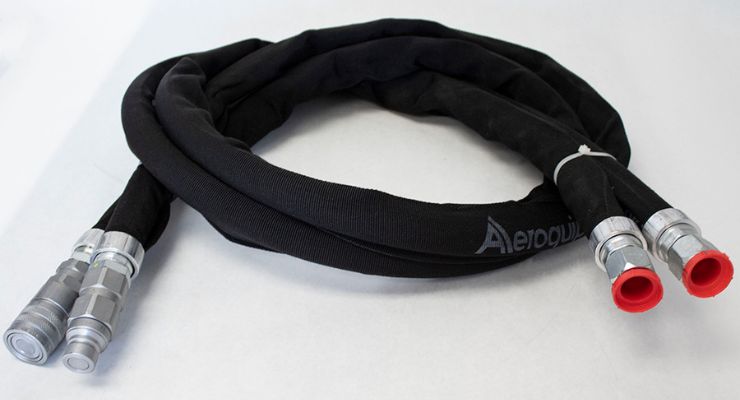
The hydraulic couplers may be different sizes for high and low flow skid steers, but this varies largely by machine.
Often times, skid steers with low flow hydraulics will have 1/2" flat face couplers, while higher flow skid steers may have 3/4" flat face couplers. This isn't always true though, and you should be sure to check with your skid steer manufacturer.
The hydraulic hoses may have a larger diameter on high flow brush cutters to accommodate the higher flow.
Who Is a Low Flow Brush Cutter Right For?

If your skid steer only has low flow capabilities, then for sure a low flow brush cutter is right for you.
However, for customers with skid steers capable of both high and low flow, you may consider a low flow model of brush cutter in certain circumstances.
Investment Value
Many low flow brush cutters can be purchased at a more economical price. For customers looking to save on the initial purchase price of their first cutter, it may make sense to stick to a low flow brush cutter.
Being able to save on the purchase price of any attachment while not suffering any noticeable performance losses creates better value for your business.
Difficult Terrain
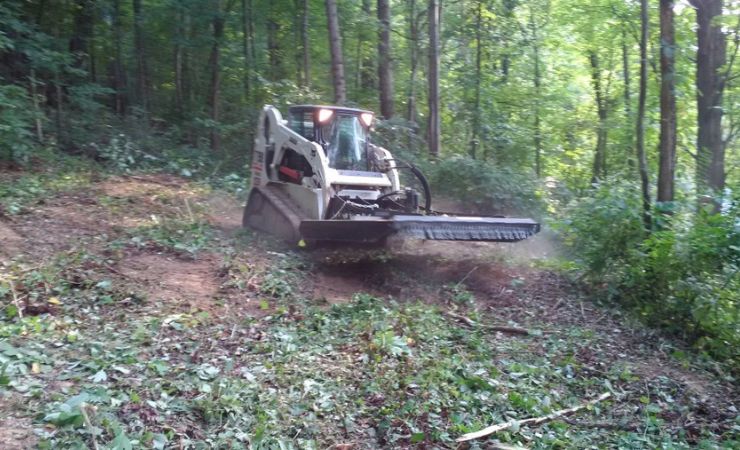
Interestingly, you may want to consider a low flow brush cutter when you are planning to work on steep and challenging terrain.
The hydraulic capability of a skid steer needs to be shared among all of its components. Therefore, being able to raise the loader arms, run uphill and keep the brush cutter working at an optimal torque may be easier with a smaller hydraulic demand from the bush cutter.
Conclusion
Some customers may only be able to use low flow brush cutters because of the hydraulic capabilities of their skid steer.
However, for those customers that have the option of both high and low flow, you should carefully weigh the unique advantages of a low flow brush cutter against the extra 10% power that a high flow brush cutter can offer.
Remember, choosing a skid steer brush cutter is more than just matching up hydraulic flow rates. Looking at the terrain and cutting conditions as a whole, you may find that you prefer the low flow brush cutter!

